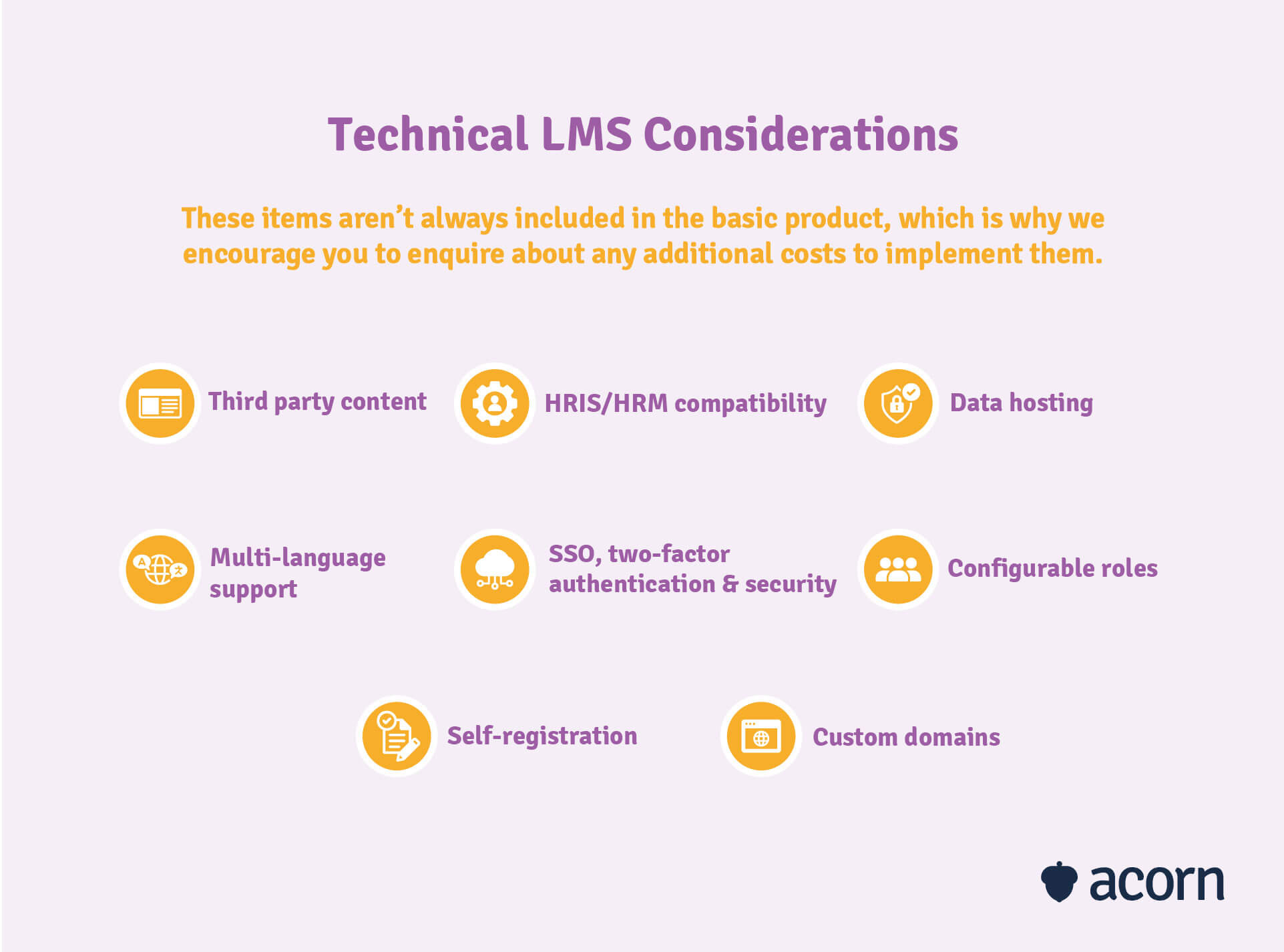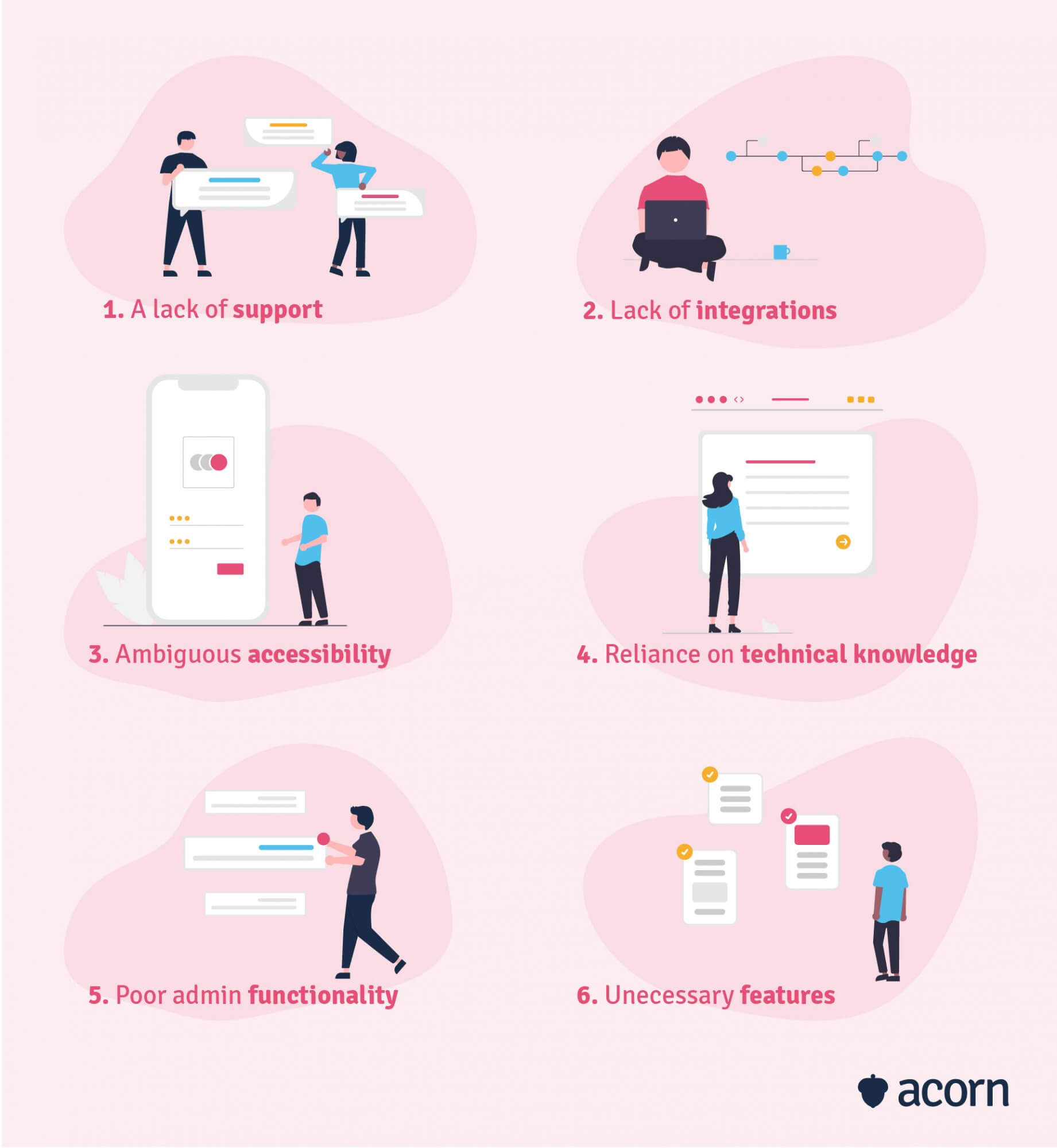How To Conduct An LMS Feasibility Study

Essentially, you’re testing if an LMS provider can meet your requirements. (NB: Not a step to skip.)
When searching for a learning management system (LMS), it’s crucial to compare and contrast the proposed plans suppliers offer as a solution to your online learning needs.
The choice you make off the back of this is both a big financial investment and a crucial component in change management. So, it’s important to make sure the online learning solution you choose can realistically deliver what it’s advertising. Little tip: An LMS Feasibility Study Spreadsheet is your master guide to make comparing RFP responses easy.
For a more detailed look at conducting an LMS feasibility study, read on for the questions you should be asking in your feasibility study, pitfalls to avoid and when to conduct a feasibility study for an LMS supplier.
What is an LMS feasibility study?
Let’s start with what a learning management system feasibility study actually is, shall we? It’s a fancy name for assessing the practicality of a proposed plan—namely, the responses to your request for proposal. You are essentially asking, “Is this proposal feasible?”
But whilst this is the discovery to aim for in a feasibility study, there are a number of more targeted questions you’ll want to answer to ensure you can say confidently yes or, disappointingly, no. Aside from ensuring a proposal ticks all your boxes, it’ll also help you sidestep some of the most common pitfalls we see organisations coming up against when they act as though supplier selection is akin to a shot in the dark.
The business risks of not using an LMS feasibility study
You have an unserved need (or perhaps several). You understand the offerings from leading suppliers, but you cannot be sure you’re getting what you’re paying for without assessing them. It’s also a measure of the factors that may positively or negatively impact a proposed plan.
A feasibility study helps you assess whether certain hurdles are too high for your organisation to clear—for example, an eLearning solution that is way outside your budget or cannot scale with you. A budget that runs over or a business that outgrows their initial LMS will be stunted financially, locked out of scaling to match a growing market, and find themselves with lengthy negotiations to rejig their contract with the supplier.
It’ll help you determine whether a particular eLearning project is worth the investment, or if it’ll pull too many resources from other tasks that may end up costing your organisation more in the long-run. Then there’s the operational, scheduling, legal and technical restraints that will crop up, from the time you require for deployment to whether you are legally allowed to proceed with the project. In short, a feasibility study is a good measure of the market and what’s sustainable, and a good way to further define your goals for an LMS project.
Priority questions for an LMS feasibility study
Beyond “is this feasible?”, there are a few crucial questions you want a feasibility study to answer. The clearer you are with your input in your feasibility study comparison document, the more easily comparable proposals will be. Our downloadable LMS Feasibility Study Spreadsheet is a master document that makes it easy to compare products and choose the right supplier.
The resources you need for implementation, the business objectives you want to achieve, and the features that define the right LMS for your organisation are the broader information you want to unearth with the following three questions.
Are our requirements available?
Often, a supplier cannot deliver what you’re asking for simply because they don’t have those features to offer. This is why you need to be shrewd, and where a feasibility study is most helpful.
Reporting
Reporting tools dictate learner pathways via completion and interaction data, as well as delivering real-time reports for instructors and admin—making them invaluable to users on both sides of the gate.
Business goals
Are we talking money, growth, streamlined processes, all of the above, or something else entirely? If a supplier’s proposal doesn’t include a plan for the future, you’re not going to get very far using their system.
Learner needs
You’re procuring and likely managing this system, but your learners are the intended user. Has the supplier considered what they need? Have they outlined the usability, in terms of how content is accessed, navigated and arranged, and how completion is rewarded?
Content management
Some non-negotiables might be content that is a) SCORM-compliant and therefore ideal for reporting, b) accessible from third party providers, and/or c) easy to translate into multiple languages at no cost to you or the quality of information.
Communication
Some LMSs will offer direct messaging or forums. You might consider SMS notifications extremely important for remote workers. Perhaps you engage subject matter experts regularly and need a sandbox editing environment. These functionalities won’t be available on every platform, so it’s important to study a supplier’s proposal for these options.
Technical requirements
We’ve mentioned before the importance of involving your IT team or department in determining the full scope of technical requirements you need. The devil is in the technical detail (i.e. SSO, data security and integrations with existing internal systems), which is where it really takes an expert eye to ensure you’re getting the system you’re paying for.

Specialty requirements
Perhaps you detailed commoditised content is your wheelhouse, explained your branding is important, or that it’s a goal for content to increase user engagement. Can a supplier provide features, integrations and functionalities that match these needs?
Functional requirements
What is the system meant to do for you, and how will it do that? How an LMS works for a government department is entirely different to how a yoga studio teaches through the same platform. Say both want to engage their users, but the government department might utilise microlearning principles to make course content more digestible for learners while the studio may value a system that is responsive and accessible on any device.
Priorities
Once your requirements have been determined, you need to prioritise them. Stakeholders, decision makers and even SMEs are the power players in this step, as they’ll ensure priorities are fairly spread across departments, fields and business goals. You’ll best use a scoring system to weigh each priority, ranging from nice-to-have to non-negotiable/deal breaker.
While we encourage you to be firm on these, we also note a little flexibility is required. User interfaces will look different across platforms, which means the parameters surrounding ease of use will also differ. When it comes down to reviewing systems on such a micro level, you’ll find evaluation easier with a little room to move if you discover a new and unexpected must-have in the analysis process.
Acorn PLMS comes with all these requirements and more.
Hit the book a free demo button here, take seconds to fill in your details, and find out how Acorn can help you succeed.
What are the costs?
So simple to ask, yet a tough one to answer. There are many factors that will impact the cost of an LMS, including:
- Licensing
- Number of users
- Maintenance
- Implementation
- Third party providers and integrations
- Tech support
- IT team time and resources
- Internal system training
- System upgrades
- Customisation
- Costs of changes to existing learning or training courses.
And not to mention, the different pricing models (per user, per active user, per year, all-inclusive, ‘freemium’) that also make price comparison complex. As a result, comparing overall costs is a slippery slope. We recommend comparing across scenarios, such as the total number of learners this year compared to the number you forecast for the next, to determine a realistic budget. This will also help you determine what should be included in your LMS, rather than what simply could be.
What is our ROI?
Or, in other words, will you make your money back? A key point we want to note is you don’t want to try calculating the ROI across every LMS you take a fancy to; pick one or two of your top choices to conduct an ROI analysis.
This is done by comparing the costs of the new system with your current one, or your current method of organisational learning, by accounting for the explicit benefits you are afforded. These could be expected revenue, money saved, or less tangible items such as brand impact. The monetary figure of these benefits divided by the costs of the new system, times by 100, is the ROI percentage you might get.
The importance of cost vs ROI
For one, without a clear idea of criteria to address (and especially if a supplier’s response covers a new feature or function you hadn’t previously considered), you may find yourself a victim of scope creep. Any additional features or needs beyond an agreed-upon scope will eat into time, deplete satisfaction, blow budgets out and extend key deadlines, the combined impact of which could lead to an unfulfilled project. This decreases the value of an eLearning solution within your organisation, as stakeholders and intended users alike may come to see it as another aimless, high-level business play.
When it comes time for demos—the penultimate stage where you see the actual system in use—a lack of evaluation criteria will mean you won’t know what you’re looking for across sales pitches. Lacking prioritisation of needs, you’ll be sorely disappointed when you discover not all LMSs will have exactly every feature you need or every functionality you require. Categorising them from desirable to need-to-have allows you to effectively eliminate suppliers who don’t have all of the latter, so to choose from the pool who can give you those and the former.
Common LMS pitfalls to avoid
Choosing the right LMS is a make or break decision for your budget, user buy-in and ROI. It’s also a long-term investment, which means the choice you make now is going to affect your business objectives in one, five, ten years’ time.
We’ve seen many organisations become overwhelmed by the sheer weight of the decision, which is why we created a comprehensive LMS Feasibility Study guide. Before you start reviewing to your heart’s content, here are the key traps to avoid falling into.

A lack of support
We’ve had many clients come to us from other suppliers who left them on their own when it came to maintaining their system or authoring the type of online learning content they needed. Many popular LMSs require programming knowledge to be able to use them effectively—knowledge that is hard to learn and expensive to pay a consultant to impart. Then there’s the trials of timezones, and localised vs international support.
Why technical support matters
Not understanding the depth of support you’ll receive and system knowledge you require is a costly mistake, in more ways than financially. If the burden falls to an internal team without the right knowledge to navigate these tools, morale may drop and faith in high-level decision making could be compromised. And if you do have supplier support, but they’re on a different timezone to you, you could be waiting hours or even days for bug fixes you need now.
Too many moving parts
Time is a precious, sought-after and ultimately finite resource in the workplace. As such, wasting it on a system that’s hard to navigate and takes away from the learning experience is a poor way to bolster user buy-in. It also makes for significant admin overheads as a result of ad hoc project management.
Why ease of user matters
We’ve heard of many instances where organisations implemented a system that asks more of the platform admin and users than they originally expected. Decision makers expect that those overseeing an LMS project will deliver on certain deadlines, but if admin are caught up trying to learn how to simply manage a system—let alone optimise it—those deadlines may be missed and the work environment could become tense and stressed as a result.
Ambiguous accessibility
A responsive design is undoubtedly important in the 21st century. But responsive does not necessarily mean enabled for multiple devices or users with disabilities. Government departments need at least a WCAG compliance for all online content. We’ve found a common problem with mobile-compatible LMS is the user interface can be poorly designed, causing learners to use it only infrequently, if at all.
Why accessibility matters
If users are constantly pinching and zooming in and out to view content, or are unable to view all of the content they need on a device, it leads to heightened disengagement and disillusionment of the benefits of eLearning for them—a real drawback when an intuitive LMS requires frequent logins to gauge learning habits and provide accurate reporting. Then there’s the importance of access for learners with disabilities; if they are left out of the loop, it could send the message your organisation is not an inclusive workplace—to potential employees outside of your organisation, too.
Key takeaways
The LMS feasibility study is basically the last defensive barrier between your organisation and a bad LMS purchase.
Through a series of requirements, a feasibility study helps you ascertain if an LMS vendor can provide the features and functionality to meet your goals. That could requirements like:
- Reporting
- Process improvement
- Learner engagement
- Content creation
- Third party integrations.
It also helps you refine your budget and what a good return on investment looks like to your stakeholders. All in all, this will help you avoid falling victim to lacking technical support, cumbersome software and exclusive accessibility. A little bit of effort for a lot of return, wouldn’t you say?